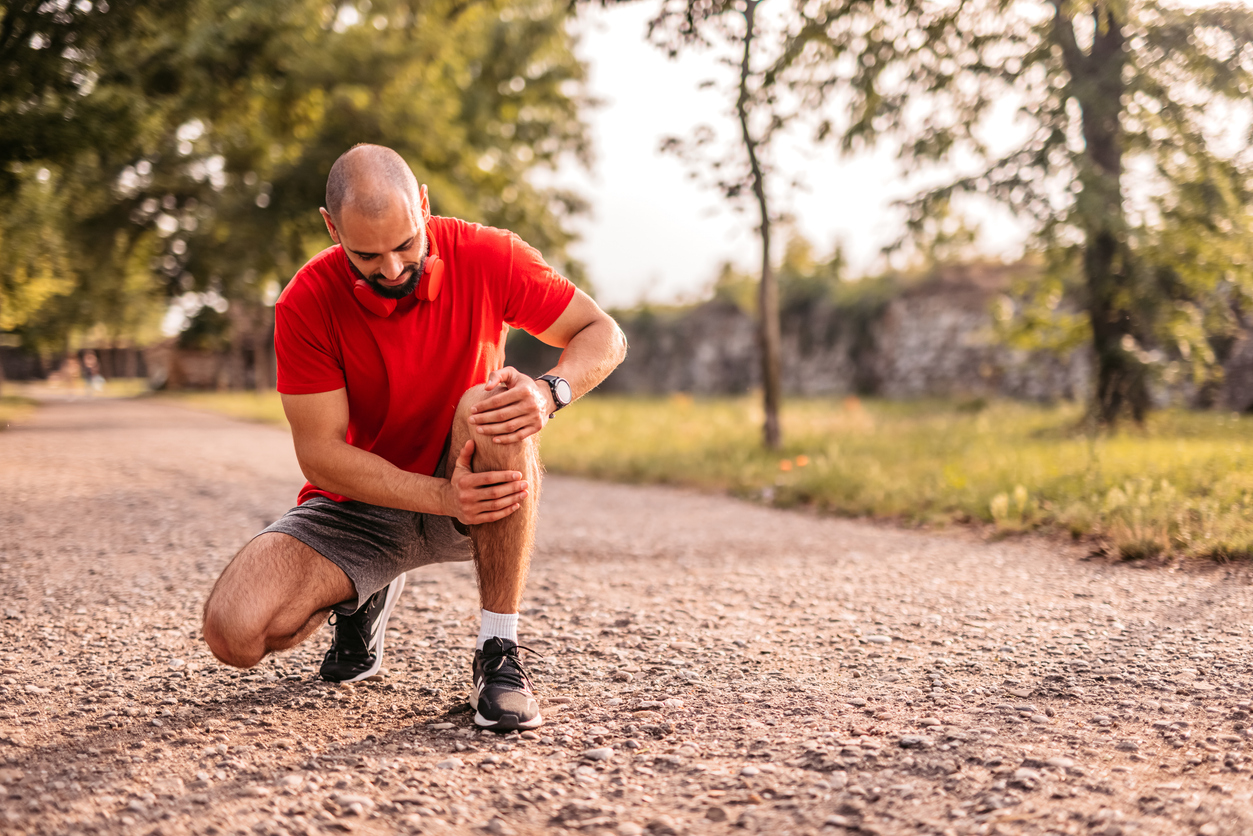
Exercise is a cornerstone of a healthy lifestyle, offering numerous benefits such as improved cardiovascular health, enhanced mood, and better overall physical fitness. However, for those suffering from knee pain, the idea of staying active can be daunting. Knee pain is a common issue that affects people of all ages and activity levels, leading many to question: should you exercise with knee pain?
Understanding Knee Pain
Knee pain can arise from various factors and manifest in different ways, making it essential to understand the underlying causes and the specific types of pain you might experience.
Knee Pain Causes
Knee pain can stem from various causes, from acute injuries to chronic conditions. Some common knee pain causes include:
- Injuries: Sprains, strains, ligament tears (such as ACL injuries), and meniscus tears are common knee injuries that can result in pain.
- Arthritis: Osteoarthritis, rheumatoid arthritis, and other forms of arthritis can cause chronic knee pain and stiffness.
- Overuse: Repetitive activities or overuse can lead to conditions such as patellar tendinitis or iliotibial band syndrome.
- Mechanical Issues: Misalignment of the knee, hip, or feet, as well as flat feet, can contribute to knee pain.
Understanding the root cause of your knee discomfort is essential to developing the right treatment and knee pain relief exercises.
Types of Knee Pain
Knee pain can manifest in various locations around the knee, each indicating different potential issues:
- Pain Behind Knee: This type of pain can be due to hamstring tendonitis, Baker's cyst, or other issues related to the back of the knee.
- Pain on the Sides or Front of the Knee: Pain in these areas might be caused by patellofemoral pain syndrome, meniscus tears, or ligament injuries.
Should You Exercise with Knee Pain?
Before diving into an exercise routine with knee pain, seek professional advice and follow general guidelines to stay safe and avoid further injury.
Consulting a Professional
Before starting or continuing an exercise regimen with knee pain, consult with a healthcare professional. A doctor, physiotherapist, or orthopaedic specialist can diagnose knee pain causes and provide tailored advice on safe exercises or recommend suitable exercises for knee pain. They can also help you understand the difference between pain that indicates harm and discomfort that can be managed. One can also take advantage of physio insurance and osteopathy insurance as an extra cover to overcome movement disorder.

General Guidelines for Exercising with Knee Pain
If your healthcare provider gives you the green light to exercise, consider these general guidelines to ensure you’re exercising safely:
- Go for Low-Impact Exercises: Activities such as swimming, cycling, and walking are gentler on the knees compared to high-impact exercises like running or jumping.
- Listen to Your Body: Pay attention to your pain levels. If an exercise causes significant pain, stop immediately and consult your healthcare provider.
- Warm-Up and Cool-Down: These steps help prepare your joints and muscles, reducing injury risk and easing knee pain.
Best Knee Exercises for Knee Pain
The best knee exercises for knee pain include a mix of strengthening, flexibility, and stability movements to support joint health.
Strengthening Exercises
Strengthening the muscles around the knee can help support and stabilise the joint, reducing pain and preventing further injury. Here are some effective strengthening exercises:
Quadriceps Strengthening:
- Straight Leg Raises: Lie on your back with one leg bent and the other straight. Slowly lift the straight leg to the height of the bent knee. Hold for a few seconds, then lower. Repeat 10-15 times for each leg and perform 2 more sets with both legs.
- Wall Squats: Stand with your back against a wall and your feet shoulder-width apart. Slowly slide down into a squat position, keeping your knees in line with your toes. Hold for 5-10 seconds, then return to standing. Repeat 10-15 times.
Hamstring Strengthening:
- Hamstring Curls: Stand with your feet hip-width apart. Slowly lift one heel towards your buttocks, keeping your knees in line. Hold for a few seconds, then lower. Repeat 10-15 times for each leg and perform 2 more sets with both legs.
Flexibility Exercises
Maintaining flexibility in the muscles around the knee can help reduce pain and improve mobility. Here are some gentle stretching exercises:
- Hamstring Stretch: Sit on the floor with one leg extended and the other bent. Reach towards your toes on the extended leg, keeping your back straight. Hold for 20-30 seconds, then switch legs. Repeat one more time for each leg.
- Calf Stretch: Stand facing a wall with your hands on the wall for support. Step one foot back, keeping the heel on the ground and the knee straight. Bend the front knee slightly and lean into the wall until you feel a stretch in the back leg. Hold for 20-30 seconds, then switch legs. Repeat one more time for each leg.
Balance and Stability Exercises
Improving balance and stability can help prevent falls and further injury to the knee. Try these exercises:
- Single-Leg Stance: Stand on one leg holding onto a chair or wall for support, if needed. Hold for 10-20 seconds, then switch legs. Gradually try to balance without support. Repeat 2 more times for each leg.
- Heel-to-Toe Walk: Walk in a straight line, placing the heel of one foot directly in front of the toes of the other foot. Try to keep your balance without wobbling.
Pain Relief Techniques
Knee Pain Relief Exercises
In addition to strengthening and flexibility exercises, specific knee pain relief exercises can help alleviate discomfort:
- Knee Marching: Sit on the edge of a chair with your feet flat on the floor. Lift one knee towards your chest, then lower it back down. Alternate legs and repeat 10-15 times for each leg.
- Seated Knee Extension: Sit on a chair with your back straight and feet flat on the floor. Slowly extend one leg out in front of you, keeping it straight. Hold for a few seconds, then lower. Repeat 10-15 times for each leg.
Use of Heat and Cold Therapy
Applying heat and/or cold to the knee can help manage pain and reduce inflammation:
- Heat Therapy: Use a warm towel or heating pad on the knee for 15-20 minutes before exercise to relax the muscles and increase blood flow.
- Cold Therapy: Apply an ice pack wrapped in a cloth to the knee for 15-20 minutes after exercise to reduce swelling and numb pain.
Over-the-Counter Pain Relief
Over-the-counter medications, such as non-steroidal anti-inflammatory drugs (NSAIDs) like ibuprofen, can help manage knee pain. Always follow the dosage instructions and consult your healthcare provider if you have any concerns. Moreover, avoid relying on pain medication for relief. Long-term solutions come from consistent knee pain relief exercises and proper care.

Preventive Measures and Lifestyle Tips
Maintaining a Healthy Weight
Excess weight puts additional stress on the knees, exacerbating pain and increasing the risk of injury. Maintaining a healthy weight through a balanced diet and regular exercise can significantly improve knee health.
Proper Footwear and Orthotics
Wearing supportive shoes and using orthotics, if necessary, can help align your feet and reduce knee strain. Choose shoes with good arch support and cushioning and replace them regularly to ensure they remain effective.
Modifying Daily Activities
Making small changes to your daily routine can help reduce knee pain:
- Avoid Prolonged Standing: If you need to stand for long periods, take breaks to sit and rest your knees.
- Use Assistive Devices: Consider using a cane or knee brace for additional support if recommended by your healthcare provider.
- Adjust Your Environment: Ensure your living and working spaces are ergonomically friendly to reduce knee strain.
When to Avoid Exercise
While exercise can be beneficial, it's important to recognise when rest is necessary and explore alternative activities that are easier on your knees.
Signs You Should Rest
While exercise can be beneficial, it’s important to recognise when to rest and avoid further injury:
- Severe Pain: If you experience sharp or severe pain during or after exercise, stop immediately and seek medical advice.
- Swelling: Significant swelling in the knee may indicate a need for rest and medical evaluation.
- Instability: If your knee feels unstable or gives way, avoid exercise until you’ve consulted a healthcare professional.
Alternative Activities
If traditional exercises are too painful, consider these low-impact activities:
- Swimming: Provides a full-body workout without putting stress on the knees.
- Water Aerobics: Offers a gentle way to improve cardiovascular fitness and muscle strength.
- Cycling: Low-impact cycling can strengthen the muscles around the knee and improve flexibility.
Exercising with knee pain can be challenging, but it is possible to stay active while managing your discomfort. By understanding the causes of knee pain, consulting with healthcare professionals, and following safe exercise guidelines, you can maintain your fitness and improve your knee health. Always listen to your body and seek professional advice when needed. Consistent use of exercises for knee pain, you can support your joint health and manage discomfort. From understanding pain behind knee issues to identifying the best knee exercises for knee pain, the right information empowers you to move with confidence.With the right approach, and suitable insurances such as physio health insurance and osteo health insurance you can keep moving and enjoy the benefits of an active lifestyle.
Explore HIF's partnership with Kieser for specialised programs designed to support individuals with Knee Osteoarthritis and other circumstances such as Hip Osteoarthritis and Spinal concerns. Start your journey towards improved mobility and pain management today.
FAQs: Knee Pain and Exercise
1. Can I still exercise if I have knee pain?
Yes, but it’s important to consult a healthcare provider first and focus on low-impact and safe exercises for knee pain.
2. What are common causes of knee pain?
Knee pain causes include injuries, arthritis, overuse, or mechanical issues like misalignment or flat feet.
3. What are the best knee exercises for knee pain?
Strengthening exercises (like leg raises and hamstring curls), flexibility stretches, and balance drills are among the best knee exercises for knee pain.
4. What does pain behind the knee mean?
Pain behind knee can indicate issues such as a Baker's cyst, hamstring tendonitis, or other conditions affecting the back of the knee.
5. How can I relieve knee pain at home?
You can try knee pain relief exercises, apply heat or cold therapy, and manage weight and activity levels to reduce discomfort.
6. When should I stop exercising due to knee pain?
Stop immediately if you feel sharp pain, notice swelling, or your knee becomes unstable.
7. Are there specific exercises to avoid with knee pain?
Yes—avoid high-impact activities such as running, jumping, and deep squats unless approved by a professional.
Please note: Taylah's blog is general advice only. For further information on this topic please consult your healthcare professional.